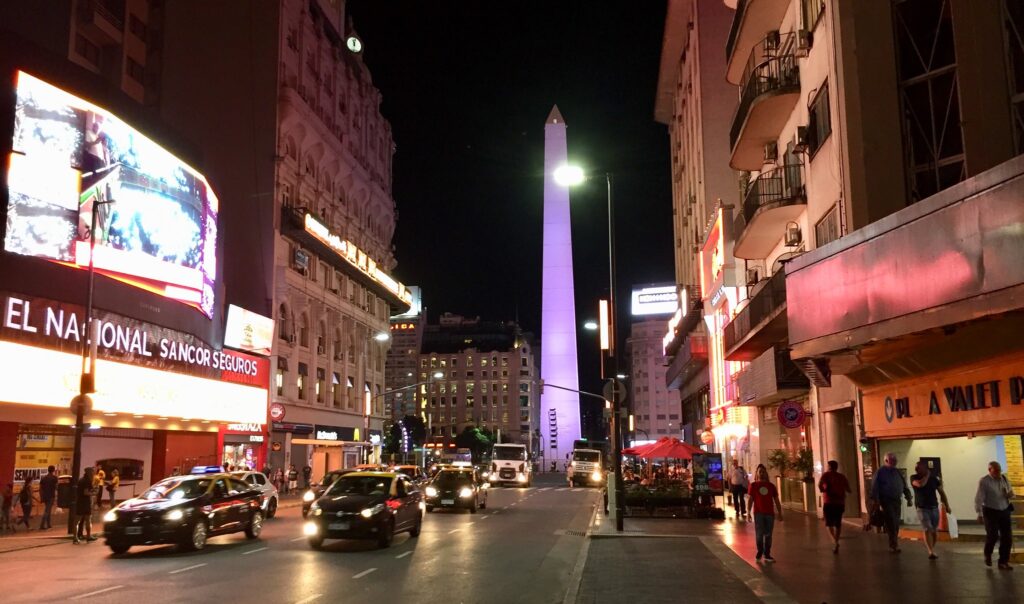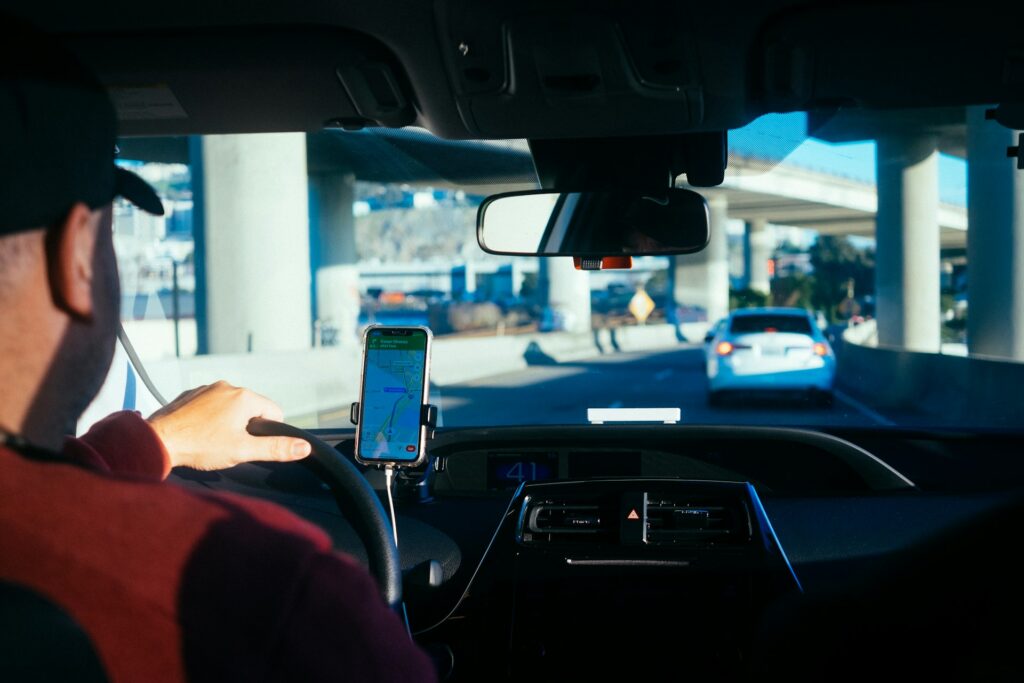The taxi monopoly in Buenos Aires entered into crisis when applications like Uber or Cabify burst into Argentina. If until a decade ago the taxi was the first (and only) option for traveling by private car, the scenario has changed drastically since then.
But Uber, Cabify or DiDi, to name the main car-sharing applications, are not always so convenient. In some cases, a taxi may be the only alternative to travel, while in others ride-hailing apps may be.
In this article we will analyze when each transportation option is most convenient. This way you will maximize your budget and be able to get around Buenos Aires without thinking about it so many times.
Taxi or Uber in Buenos Aires: When is Each More Convenient?
Fare and Price
Buenos Aires taxis offer a fixed fare that includes a boarding fee (known as the “flag drop”) and constant increments every 200 meters or per minute of waiting. Additionally, a 20% surcharge is added during nighttime hours due to certain areas of Buenos Aires not being as safe as Palermo, Recoleta, or Downtown Buenos Aires.
On the other hand, apps like Uber, Cabify, or DiDi calculate the trip cost based on various factors: supply and demand, time and day of travel, type of service requested, distance to be traveled, etc. Therefore, while you know in advance how much the trip will cost, the price can vary from very cheap to excessively expensive.
Night Service
Depending on the day of the week and the time of night, the taxi service can range from normal to low. Competition with ride-sharing apps like Uber or Cabify has reduced the presence of taxis on Buenos Aires streets, especially during nighttime hours.
In contrast, ride-hailing apps offer good availability at night, with the advantage that you can request a car without needing to be out on the street. However, factors such as distance or the simple dynamics of supply and demand can affect the waiting time for your ride to be accepted.

Driver Reputation
Unless you use a mobile app to request taxis, it is very difficult to know the reputation and ratings of a driver. Sometimes, you may get into a taxi and not feel comfortable with the driver’s way of driving, whether because they are too slow or extremely reckless.
Apps like Uber or Cabify allow you to know the identity of the driver, the vehicle you will be traveling in (including its license plate), and the driver’s reputation. If something does not inspire confidence, you can cancel the ride and request another. Additionally, the rating system allows the app to detect drivers who are not suitable or provide poor service.
Licenses and Regulation
Taxis always have a unique and non-transferable license provided by a regulatory authority competent in the transportation area, making it a supervised and legal service. This aspect is often highlighted by taxi drivers to defend their legitimacy against ride-hailing apps like Uber or Cabify.
On the other hand, ride-hailing apps require drivers to meet a set of criteria to join their fleet: minimum vehicle conditions, driver identity and information, etc. However, they are not regulated by the State or any competent authority. In fact, you will not see Uber or Cabify vehicles identified as such on the street, unlike taxis and their drivers.

Shared Rides
A taxi in Buenos Aires can transport up to 4 passengers, excluding the driver. This limit is established by official regulations, so even the driver’s goodwill cannot override it. However, carrying luggage may reduce the space for one passenger. Additionally, the driver’s discretion can also come into play, as they may refuse the ride if deemed appropriate.
Apps like Cabify and Uber set a maximum number of passengers at 4 and 3, respectively. However, in practice, this number is not always guaranteed and is subject to the driver’s discretion. It is not uncommon for a ride to be canceled at the last minute if the driver decides they do not want or cannot transport 3 or 4 passengers.
Payment Methods
Taxis traditionally only accepted cash until not too long ago. The devaluation of the Argentine peso and complications in handling many bills forced taxis to diversify payment methods. While cash remains the main payment method, more taxis now accept virtual wallets (Mercado Pago), cards, and QR codes.
In the case of ride-hailing apps, the payment method is much more convenient and diversified. You can pay in cash, with cards, virtual wallets, and even PayPal (not in all cases). You can also decide whether to pay in advance or upon arrival, and whether to add a tip or even split the fare among passengers.

Variety of Services
While it used to be common to see various types and models of taxis (sedans, small vans), today, most taxis are sedans with a trunk in the back. However, you will notice that some are somewhat small vehicles, while others are larger.
In the case of apps like Uber or Cabify, you will find not only different car models but also other service options. For example, premium or group rides, where the allowed number of passengers is higher. Additionally, you can take advantage of parcel delivery services, an additional service offered by these apps to send or receive packages.
Applications available for mobile phones
Taxi services have some applications to request vehicles from your mobile phone. You even have the BA Taxi application, which is official and one of the most important, although not the best compared to those offered by private taxi companies.
On the other side, and with a more streamlined and agile operation, you find car sharing applications. In fact, it was taxi applications that have replicated the travel request and management model of Uber, Cabify and DiDi, among others.
| Aspect | Taxis | Uber/Cabify |
|---|---|---|
| Fixed Fare | Yes | No |
| Variable Pricing | No | Yes |
| Night Surcharge | Yes (20%) | Yes (Dynamic) |
| Availability at Night | Limited | Good |
| Driver Reputation | No | Yes |
| Regulated by State | Yes | No |
| Max Passengers | 4 | 3-4 |
| Accepts Cash | Yes | Yes |
| Accepts Cards | Some | Yes |
| Virtual Wallets | Some | Yes |
| Vehicle Variety | Limited | Yes |
| Premium/Group Rides | No | Yes |
| Parcel Delivery | No | Yes |
| Advance Price Estimate | No | Yes |
| Can Cancel Ride | No | Yes |
| Availability of Apps | Yes | Yes |
Final comparison
The popularity that Uber and Cabify, as well as other similar applications, have achieved for travel in Buenos Aires has generated interesting competition with the taxi service.
On the taxi side, you find a regulated service supported by government regulations, with each of the drivers, vehicles and licenses perfectly legalized. On the other hand, car sharing applications that stand out for their versatility and practicality, as well as their various payment methods.
(Featured image source: Lexi Anderson/unsplash.com)


